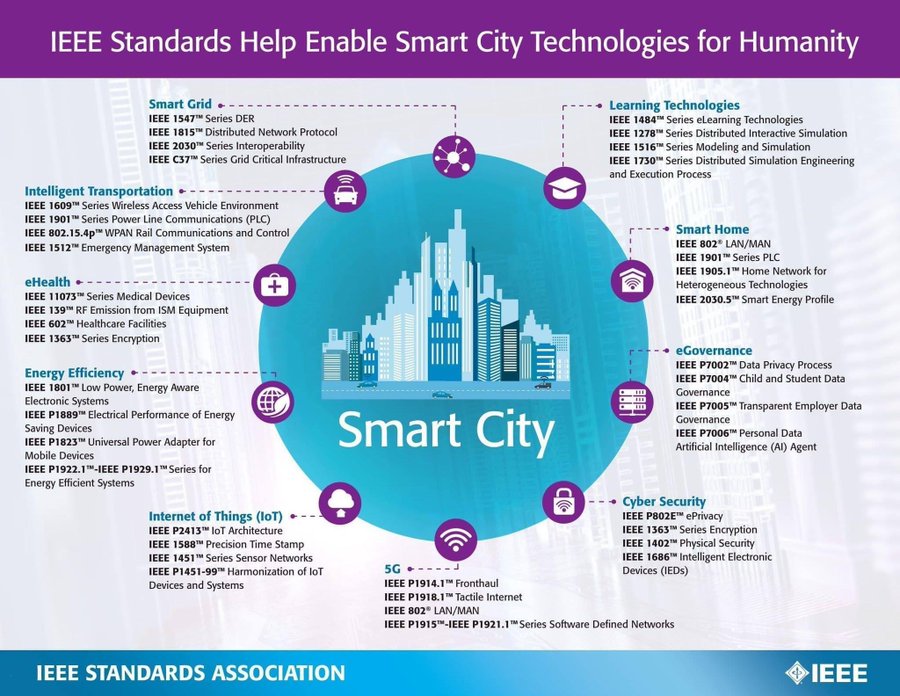The heralded rise of “Smart Cities” was expected to bring data-centric solutions to urban challenges. Whilst Asia remains ahead of the curve, legacy cities (particularly in the West) are now feeling the pressure to upgrade ageing infrastructure. The COVID-19 pandemic, mounting sustainability commitments, resource constraints and continued urban growth are making a new case for investment. It has never been more crucial to make cities smarter, more efficient, and sustainable for their residents.
Smart Cities have the potential to generate $20 trillion in economic benefits by 2026.1 Companies are being incentivised to fund Smart City projects through green stimulus packages and strategies that help reduce their financial risk whilst also providing potential for ancillary income. Our analysts argue that prioritising changes to urban infrastructure is central to Smart City development, ensuring the foundations are in place before additional solutions and services can arise. They expect four key investment areas to rise to the top.
Smart Cities: Four infrastructure investment opportunities
Enabling technologies
Buildings & construction
Energy
Water & waste management
Enabling technologies
The accelerated development of new technologies including 5G, AI, cloud, and edge computing is helping to drive the evolution of Smart Cities. We are in the early stages of an edge computing revolution and it is critical to support the exponential increase in the number of connected devices, and vast growth in data collected. Approximately $20 billion of opportunities across hardware, software, and services could be deployed at the edge by 2023,2 with a significant upside to those numbers in the long term.
Investment in reliable technology and high-speed connectivity is central to Smart City buildout. The expedited shift to work from home in 2020 is driving the need for reliable and secure high-speed connectivity. As vital infrastructures become connected, cities must be aware of vulnerabilities to adversaries. Telecom and technology companies must increasingly collaborate with governments and invest in reliable networks, cybersecurity and backup systems.
Buildings and construction
Decarbonising the sector is one of the most cost-effective ways to mitigate climate change. Commercial buildings account for 20% of energy use in the US, 30% of which is wasted.3 Smart solutions can transform them into energy-efficient and sustainable buildings whilst also automating the way they are managed.
With all buildings required to be net-zero carbon by 2050 to meet the goals of the Paris agreement, the demand for smart buildings is only increasing. Government policies, teamed with financial incentives for companies to invest in smart buildings, are crucial to help transition toward accessing major energy savings whilst improving energy services.
Improved energy sourcing, management and deployment
With cities consuming over two-thirds of the world’s energy,4 there is immense pressure to transition to lower-carbon energy systems. Our analysts believe investment in smart technology can speed the transition, whilst bringing economic growth and competition. They expect to see significant investment in smart grids, next-generation energy transmission, and distribution networks that can automatically monitor energy flows and adjust to changes in supply and demand accordingly.
Other systems driving the adoption of low-carbon energy will include smart meters, which allow utility companies to introduce price differentiation, microgrids for local sources of energy, gamification apps to encourage lower consumer usage, and cooperation between companies and governments to maximize the benefits from smart systems.
Smart water and waste management
Access to clean water and the ability to treat wastewater are growing concerns for cities, along with how to better manage waste. Water losses and flooding are also an increasing threat, with the impacts of climate change and rapid urbanisation. Urban planners are being forced into upgrading ageing drainage systems. That need is bringing smart solutions to the fore, including leakage and pollution detection and predictive maintenance planning.
On the waste side, our analysts expect investment in just-in-time waste collection, which uses sensors to optimise the collections. The traditional waste management model of bin to landfill is being overtaken by circular waste management, which emphasises decreasing waste at the source through improved use of packaging, strategic collection methods and distributed waste-to-energy solutions.
Sustainable, resilient cities bring benefits to residents and investors
The volume of stakeholders in cities has served as a barrier to progress. But thanks to new business models and pressure to meet sustainability commitments, these public infrastructure projects should attract private investment. Our analysts also take a wider view of what has typically been considered ‘smart’, shifting attention away from consumer-facing smart technologies and prioritising changes to urban infrastructure. With this approach, cities won’t be just smart – but sustainable and resilient for the people liv








